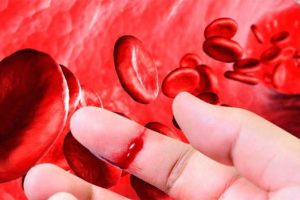Анаеробна клостридіальна інфекція, Адаптована клінічна настанова, заснована на доказах
СПИСОК ЛІТЕРАТУРИ, ВИКОРИСТАНИЙ В ПРОЦЕСІ АДАПТАЦІЇ КЛІНІЧНОЇ НАСТАНОВИ
- Вказівки з воєнно-польової хірургії. Розділ 10 / за ред. Я.Л. Заруцького, А.А. Шудрака. – К.: СПЛ Чалчинська Н.В. – 2014. – С138-158.
- Emergency War Surgery (Fourth Unated States Revision, Borden institute US Army Medical Department Center and School Fort Sam Houston, Texas, українське видання, Київ 2015)
- Хирургическая инфекция: Н.П. Безлюда , А.С. Чебурахин , Я.Л. Заруцкий, И.А. Лурин, А.В. Сотников, С.В. Горелов, С.В. Маркевич; Ред. Я.Л. Заруцкий. — К., 2009. — 296 с., ил.
- Wong CH, Khin LW, Heng KS, Tan KC, Low CO. The LRINEC (Laboratory risk indicator for necrotizing fasciitis) score: a tool for distinguishing necrotizing fasciitis from other soft tissue infections. Crit Care Med 2004; 32:1535–41.
- Thorell E, Jackson MA, Bratcher D, Swanson DS, Selvaragan R. Antimicrobial resistance of Staphylococcus aureus from Kansas City children: what is the appropriate current therapy for pediatric staphylococcal infections In: Proceedings and abstracts of the 42nd Annual Meeting of the Infectious Diseases Society of America(Boston). Alexandria, VA: Infectious Diseases Society of America,2004:81.
- Ruhe JJ, Monson TP. Use of tetracyclines for infections caused bymethicillin-resistant Staphylococcus aureus [abstract 516]. In: Proceedings and abstracts of the 42nd Annual Meeting of the Infectious Diseases Society of America (Boston). Alexandria, VA: Infectious Diseases Society of America, 2004:139.
- Van Beneden CA, Facklam R, Lynfield R, Glennen A, Beall B, Whitney C. Erythromycin resistance among invasive group A streptococcal infections, United States, 1999–2001 [abstract 345]. In: Proceedings and abstracts of the 42nd Annual Meeting of the Infectious Diseases society of America (Boston). Alexandria, VA: Infectious Diseases Society of America, 2004:102.
- Yun HJ, Lee SW, Yoon GM, et al. Prevalence and mechanisms of low- and high-level mupirocin resistance in staphylococci isolated from a Korean hospital. J Antimicrob Chemother 2003; 51:619–23.
- Committee on Infectious Diseases, American Academy of Pediatrics. Antimicrobial agents and related therapy. In: Pickering LK, ed. Red book 2003 report of the Committee on Infectious Diseases. 26th ed. Elk Grove Village, IL: American Academy of Pediatrics, 2003:693–4.
- Miller LG, Perdreau-Remington F, Rieg G, et al. Necrotizing fasciitis caused by community-associated methicillin-resistant Staphylococcus aureus in Los Angeles. N Engl J Med 2005; 352:1445–53. Ferrieri P, Dajani AS, Wannamaker LW, Chapman SS. Natural history of impetigo.
- Site sequence of acquisition and familial patterns of spread of cutaneous streptococci. J Clin Invest 1972; 51:2851
- Adams BB. Dermatologic disorders of the athlete. Sports Med 2002;32:309–21.
- Hirschmann JV. Impetigo: etiology and therapy. Curr Clin Top Infect Dis 2002; 22:42–51.
- Centers for Disease Control and Prevention. Outbreaks of community-associated methicillin-resistant Staphylococcus aureus skin infections—Los Angeles County, California, 2002–2003. MMWR MorbMortal Wkly Rep 2003; 52:88.
- Ma XX, Ito T, Tiensasitorn C, et al. Novel type of staphylococcal cassette chromosome mec identified in community-acquired methicillin-resistant Staphylococcus aureus strains. Antimicrob Agents Chemother 2002; 46:1147–52.
- Okuma K, Iwakawa K, Turnidge JD, et al. Dissemination of new methicillin-resistant Staphylococcus aureus clones in the community. J Clin Microbiol 2002; 40:4289–94.
- Dufour P, Gillet Y, Bes M, et al. Community-acquired methicillin-resistant Staphylococcus aureus infections in France: emergence of a single clone that produces Panton-Valentine leukocidin. Clin Infect Dis 2002; 35:819
- Methicillin-resistant Staphylococcus aureus infections in correctional facilities—Georgia, California, and Texas, 2001–2003. MMWR Morb Mortal Wkly Rep 2003; 52:992–6.
- Methicillin-resistant Staphylococcus aureus infections among competitive sports participants—Colorado, Indiana, Pennsylvania, and Los Angeles County, 2000–2003. MMWR Morb Mortal Wkly Rep 2003;52:793–5.
- Stevens DL, Smith LG, Bruss JB, et al. Randomized comparison of linezolid (PNU-100766) versus oxacillin-dicloxacillin for treatment ofcomplicated skin and soft tissue infections. Antimicrob Agents Chemother 2000; 44:3408–13.
- Stevens DL, Herr D, Lampiris H, Hunt JL, Batts DH, Hafkin B. Linezolid versus vancomycin for the treatment of methicillin-resistant Staphylococcus aureus infections. Linezolid MRSA Study Group. Clin Infect Dis 2002; 34:1481–90.
- Mulla ZD, Leaverton PE, Wiersma ST. Invasive group A streptococcal infections in Florida. South Med J 2003; 96:968–73.
- Stevens DL. Dilemmas in the treatment of invasive Streptococcus pyogenes infections. Clin Infect Dis 2003; 37:341–3.
- Talan DA, Abrahamian FM, Moran GJ, Citron DM, Tan JO, Goldstein EJ. Clinical presentation and bacteriologic analysis of infected human bites in patients presenting to emergency departments. Clin Infect Dis 2003; 37:1481–9.
- Bratzler DW, Houck PM. Antimicrobial prophylaxis for surgery: an advisory statement from the National Surgical Infection Prevention Project. Clin Infect Dis 2004; 38:1706
- Johansson A, Berglund L, Gothefors L, Sjostedt A, Tarnvik A. Ciprofloxacin for treatment of tularemia in children. Pediatr Infect Dis J 2000; 19:449–53.
- Chocarro A, Gonzalez A, Garcia I. Treatment of tularemia with ciprofloxacin. Clin Infect Dis 2000; 31:623.
- Perez-Castrillon JL, Bachiller-Luque P, Martin-Luquero M, Mena-Martin FJ, Herreros V. Tularemia epidemic in northwestern Spain: clinical description and therapeutic response. Clin Infect Dis 2001; 33:573–6.
- Bratzler DW, Houck PM. Antimicrobial prophylaxis for surgery: an advisory statement from the National Surgical Infection Prevention Project. Clin Infect Dis 2004; 38:1706–15.
- Guyatt GH, Oxman AD, Kunz R, et al. Going from evidence to recommendations.BMJ 2008; 336:1049–51.
- Guyatt GH, Oxman AD, Vist GE, et al. GRADE: an emerging consensus on rating quality of evidence and strength of recommendations. BMJ 2008; 336:924–6.
- Guyatt GH, Oxman AD, Kunz R, Vist GE, Falck-Ytter Y, Schunemann HJ. What is “quality of evidence” and why is it important to clinicians? BMJ 2008; 336:995–8.
- Jaeschke R, Guyatt GH, Dellinger P, et al. Use of GRADE grid to reach decisions on clinical practice guidelines when consensus is elusive. BMJ 2008; 337:a744.
- Edelsberg J, Taneja C, Zervos M, et al. Trends in US hospital admissions for skin and soft tissue infections. Emerg Infect Dis 2009; 15:1516–8.
- Pallin DJ, Egan DJ, Pelletier AJ, Espinola JA, Hooper DC, Camargo CA Jr. Increased US emergency department visits for skin and soft tissue infections, and changes in antibiotic choices, during the emergence of community-associated methicillin-resistant Staphylococcus aureus. Ann Emerg Med 2008; 51:291–8.
- Pallin DJ, Espinola JA, Leung DY, Hooper DC, Camargo CA Jr. Epidemiology of dermatitis and skin infections in United States physicians’ offices, 1993–2005. Clin Infect Dis 2009; 49:901–7.
- Schunemann HJ, Oxman AD, Brozek J, et al. Grading quality of evidenceand strength of recommendations for diagnostic tests and strategies. BMJ 2008; 336:1106–10.
- Chow AW, Benninger MS, Brook I, et al. IDSA clinical practice guideline for acute bacterial rhinosinusitis in children and adults. Clin Infect Dis 2012; 54:e72–e112.
- Koning S, van der Wouden JC, Chosidow O, et al. Efficacy and safety of retapamulin ointment as treatment of impetigo: randomized double-blind multicentre placebo-controlled trial. Br J Dermatol 2008;158:1077–82.
- Wasserzug O, Valinsky L, Klement E, et al. A cluster of ecthyma outbreaks caused by a single clone of invasive and highly infective Streptococcus pyogenes. Clin Infect Dis 2009; 48:1213–9.
- Moran GJ, Krishnadasan A, Gorwitz RJ, et al. Methicillin-resistant S.aureus infections among patients in the emergency department. N Engl J Med 2006; 355:666–74.
- Duong M, Markwell S, Peter J, Barenkamp S. Randomized, controlled trial of antibiotics in the management of community-acquired skin abscesses in the pediatric patient. Ann Emerg Med 2010; 55:401–7.
- Rajendran PM, Young D, Maurer T, et al. Randomized, double-blind, placebo-controlled trial of cephalexin for treatment of uncomplicated skin abscesses in a population at risk for community-acquired methicillin-resistant Staphylococcus aureus infection. Antimicrob Agents Chemother 2007; 51:4044–8.
- Diven DG, Dozier SE, Meyer DJ, Smith EB. Bacteriology of inflamed and uninflamed epidermal inclusion cysts. Arch Dermatol 1998; 134:49–51.
- Gaspari RJ, Resop D, Mendoza M, Kang T, Blehar D. A randomized controlled trial of incision and drainage versus ultrasonographically guided needle aspiration for skin abscesses and the effect of methicillin-resistant Staphylococcus aureus. Ann Emerg Med 2011; 57:483–91.
- Schmitz GR, Bruner D, Pitotti R, et al. Randomized controlled trial of trimethoprim-sulfamethoxazole for uncomplicated skin abscesses in patients at risk for community-associated methicillin-resistant Staphylococcus aureus infection. Ann Emerg Med 2010; 56:283–7.
- Alikhan A, Lynch PJ, Eisen DB. Hidradenitis suppurativa: a comprehensive review. J Am Acad Dermatol 2009; 60:539–61; quiz 62–3.
- Humphries AE, Duncan JE. Evaluation and management of pilonidaldisease. Surg Clin North Am 2010; 90:113–24, table of contents.
- WC. Comparison of short-course (5 days) and standard (10 days) treatment for uncomplicated cellulitis. Arch Intern Med 2004; 164:1669–74.
- Jenkins TC, Sabel AL, Sarcone EE, Price CS, Mehler PS, Burman WJ. Skin and soft-tissue infections requiring hospitalization at an academic medical center: opportunities for antimicrobial stewardship. Clin Infect Dis 2010; 51:895–903.
- Pallin DJ, Binder WD, Allen MB, et al. Clinical trial: comparative effectiveness of cephalexin plus trimethoprim-sulfamethoxazole versus cephalexin alone for treatment of uncomplicated cellulitis: a randomized controlled trial. Clin Infect Dis 2013; 56:1754–62.
- Dall L, Peterson S, Simmons T, Dall A. Rapid resolution of cellulitis in patients managed with combination antibiotic and anti-inflammatory therapy. Cutis 2005; 75:177–80.
- McGee S, Hirschmann J. Use of corticosteroids in treating infectious diseases. Arch Intern Med 2008; 168:1034–46.
- Goettsch WG, Bouwes Bavinck JN, Herings RM. Burden of illness of bacterial cellulitis and erysipelas of the leg in the Netherlands. J Eur Acad Dermatol Venereol 2006; 20:834–9.
- Jorup-Ronstrom C, Britton S. Recurrent erysipelas: predisposing factors and costs of prophylaxis. Infection 1987; 15:105–6.
- McNamara DR, Tleyjeh IM, Berbari EF, et al. A predictive model of recurrent lower extremity cellulitis in a population-based cohort. Arch Intern Med 2007; 167:709–15.
- Lewis SD, Peter GS, Gomez-Marin O, Bisno AL. Risk factors for recurrent lower extremity cellulitis in a U.S. Veterans Medical Center population. Am J Med Sci 2006; 332:304–7.
- Karppelin M, Siljander T, Vuopio-Varkila J, et al. Factors predisposing to acute and recurrent bacterial non-necrotizing cellulitis in hospitalized patients: a prospective case-control study. Clin Microbiol Infect 2010; 16:729–34.
- Cox NH. Oedema as a risk factor for multiple episodes of cellulitis erysipelas of the lower leg: a series with community follow-up. Br J Dermatol 2006; 155:947–50.
- Pavlotsky F, Amrani S, Trau H. Recurrent erysipelas: risk factors. J Dtsch Dermatol Ges 2004; 2:89–95.
- Leclerc S, Teixeira A, Mahe E, Descamps V, Crickx B, Chosidow O. Recurrent erysipelas: 47 cases. Dermatology 2007; 214:52–7.
- Maurin M, Pelloux I, Brion JP, Del Bano JN, Picard A. Human tularemia in France, 2006–2010. Clin Infect Dis 2011; 53:e133–41.
- Kroshinsky D, Grossman ME, Fox LP. Approach to the patient with presumed cellulitis. Semin Cutan Med Surg 2007; 26:168–78.
- Lopez FA, Sanders CV. Dermatologic infections in the immunocompromised (non-HIV) host. Infect Dis Clin North Am 2001; 15:671–702, xi.
- Pizzo PA. Fever in immunocompromised patients. N Engl J Med 1999; 341:893–900.
- Podjasek JO, Wetter DA, Pittelkow MR, Wada DA. Cutaneous smallvessel vasculitis associated with solid organ malignancies: the Mayo Clinic experience, 1996 to 2009. J Am Acad Dermatol 2012; 66: e55–65.
- Gafter-Gvili A, Fraser A, Paul M, et al. Antibiotic prophylaxis for bacterial infections in afebrile neutropenic patients following chemotherapy. Cochrane Database Syst Rev 2012; 1:CD004386.
- Montoya JG, Giraldo LF, Efron B, et al. Infectious complications among 620 consecutive heart transplant patients at Stanford University Medical Center. Clin Infect Dis 2001; 33:629–40.
- Lamoth F, Jaton K, Prod’hom G, et al. Multiplex blood PCR in combination with blood cultures for improvement of microbiological documentation of infection in febrile neutropenia. J Clin Microbiol 2010; 48:3510–6.
- Petti CA. Detection and identification of microorganisms by gene amplification and sequencing. Clin Infect Dis 2007; 44:1108–14.
- Schuetz AN. Invasive fungal infections: biomarkers and molecular approaches to diagnosis. Clin Lab Med 2013; 33:505–25.
- Freifeld AG, Bow EJ, Sepkowitz KA, et al. Clinical practice guideline for the use of antimicrobial agents in neutropenic patients with cancer: 2010 update by the Infectious Diseases Society of America. Clin Infect Dis 2011; 52:e56–93.
- Lingaratnam S, Slavin MA, Koczwara B, et al. Introduction to the Australian consensus guidelines for the management of neutropenic fever in adult cancer patients, 2010/2011. Australian Consensus Guidelines 2011 Steering Committee. Intern Med J 2011; 41:75–81.
- Segal BH, Freifeld AG, Baden LR, et al. Prevention and treatment of cancer-related infections. J Natl Compr Canc Netw 2008; 6:122–74.
- Tomblyn M, Chiller T, Einsele H, et al. Guidelines for preventing infectious complications among hematopoietic cell transplant recipients: a global perspective. Preface. Bone Marrow Transplant 2009; 44:453–5.
- Walsh TJ, Anaissie EJ, Denning DW, et al. Treatment of aspergillosis: clinical practice guidelines of the Infectious Diseases Society of America. Clin Infect Dis 2008; 46:327–60.
- Pappas PG, Kauffman CA, Andes D, et al. Clinical practice guidelines for the management of candidiasis: 2009 update by the Infectious Diseases Society of America. Clin Infect Dis 2009; 48:503–35.
- Legrand M, Max A, Peigne V, et al. Survival in neutropenic patients with severe sepsis or septic shock. Crit Care Med 2012; 40:43–9.
- Paesmans M, Klastersky J, Maertens J, et al. Predicting febrile neutropenic patients at low risk using the MASCC score: does bacteremia matter? Support Care Cancer 2011; 19:1001–8.
- Klastersky J, Paesmans M, Georgala A, et al. Outpatient oral antibiotics for febrile neutropenic cancer patients using a score predictive for complications. J Clin Oncol 2006; 24:4129–34.
- Lanoix JP, Schmit JL, Douadi Y. Bacterial lung sepsis in patients with febrile neutropenia. Curr Opin Pulm Med 2012; 18:175–80.
- Mebis J, Jansens H, Minalu G, et al. Long-term epidemiology of bacterialsusceptibility profiles in adults suffering from febrile neutropenia with hematologic malignancy after antibiotic change. Infect Drug Resist 2010; 3:53–61.
- Nordmann P, Cuzon G, Naas T. The real threat of Klebsiella pneumonia carbapenemase-producing bacteria. Lancet Infect Dis 2009; 9:228–36.
- Johnston DL, Waldhausen JH, Park JR. Deep soft tissue infections in the neutropenic pediatric oncology patient. J Pediatr Hematol Oncol 2001; 23:443–7.
- Reich HL, Williams Fadeyi D, Naik NS, Honig PJ, Yan AC. Nonpseudomonal ecthyma gangrenosum. J Am Acad Dermatol 2004; 50: S114–7.
- Wade JC. Viral infections in patients with hematological malignancies. Hematology Am Soc Hematol Educ Program 2006; 2006:368–74.
- Bone R.C. Lets agree on terminology: definition of sepsis// Crit care Med – 1991 #7 P. 141-148
- Ertel W/ Morrison M.H. Wang P. The complex pattern of cytokines in sepsis // Ann. Surg. – 1991 #2 P.775-786
- Военно-полевая хирургия локальных войн и вооруженных конфликтов. Руководство для врачей. Под редекцией Гуманенко Е.К., Самохвалова И.М. // М.: ГОЭТАР-медиа, 2011 – 672с.: ил.
- Невідкладна військова хірургія. Навчальний посібник. Під ред.. Чаплик В., Олiйник П. К. 2015.
Джерело: IDSA: Practice Guidelines for the Diagnosis and Management of Skin and Soft Tissue Infections: 2014 Update by the Infectious Diseases Society of America
- Stevens DL, Aldape MJ, Bryant AE. Life-threatening clostridial infections. Anaerobe 2012; 18:254–9.
- Stevens DL, Laine BM, Mitten JE. Comparison of single and combination antimicrobial agents for prevention of experimental gas gangrene caused by Clostridium perfringens. Antimicrob Agents Chemother 1987; 31:312–6.
- Stevens DL, Maier KA, Laine BM, Mitten JE. Comparison of clindamycin, rifampin, tetracycline, metronidazole, and penicillin for efficacy in prevention of experimental gas gangrene due to Clostridium perfringens. J Infect Dis 1987; 155:220–8.
- Heimbach D. Use of hyperbaric oxygen. Clin Infect Dis 1993; 17:239–40.
- Goldstein EJ, Citron DM, Finegold SM. Dog bite wounds and infection: a prospective clinical study. Ann Emerg Med 1980; 9:508–12.
- Goldstein EJ, Citron DM. Comparative activities of cefuroxime, amoxicillin- clavulanic acid, ciprofloxacin, enoxacin, and ofloxacin against aerobic and anaerobic bacteria isolated from bite wounds. Antimicrob Agents Chemother 1988; 32:1143–8.
- Kroger AT, Atkinson WL, Marcuse EK, Pickering LK. General recommendations on immunization: recommendations of the Advisory Committee on Immunization Practices (ACIP). MMWR Recomm Rep 2006; 55:1–48.
- Goldstein EJ, Citron DM, Merriam CV, Warren YA, Tyrrell K, Fernandez H. Comparative in vitro activity of ertapenem and 11 other antimicrobial agents against aerobic and anaerobic pathogens isolated from skin and soft tissue animal and human bite wound infections. J Antimicrob Chemother 2001; 48:641–51.
- Brakenbury PH, Muwanga C. A comparative double blind study of amoxycillin/clavulanate vs placebo in the prevention of infection after animal bites. Arch Emerg Med 1989; 6:251–6.
- Talan DA, Abrahamian FM, Moran GJ, Citron DM, Tan JO, Goldstein EJ. Clinical presentation and bacteriologic analysis of infected human bites in patients presenting to emergency departments. Clin Infect Dis 2003; 37:1481–9.
- Pascual FB, McGinley EL, Zanardi LR, Cortese MM, Murphy













Комментировать